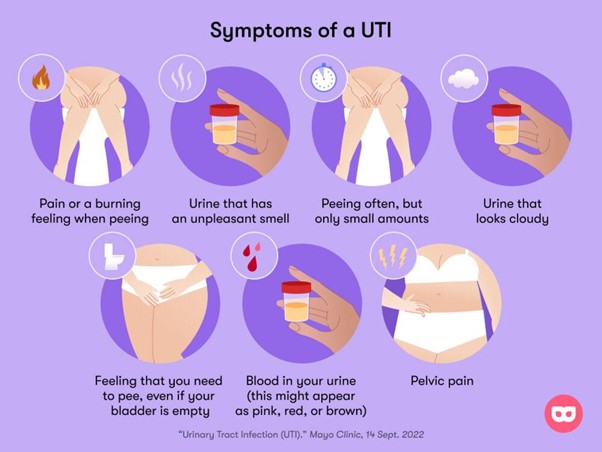A nurse educator is providing an in-service to nursing staff about urinary tract infections (UTP). Which statements made by the staff validate they understand the etiology and pathophysiology of UTIs? Select all that apply.
"UTI’s can be caused by urethrovesical reflux which is the backward flow of urine from the urethra to the bladder after coughing, sneezing or straining"
"UTI’s are more common in women due to their longer urethras"
Glycosaminoglycan (GAG) is a protein in the urinary tract that exerts a nonadherent protective effect against various bacteria"
The organism most often responsible for UTI's in older adults is staphylococcus."
The normal urinary tract is sterile above the urethra."
Correct Answer : A,C,E
Nursing Test Bank
Naxlex Comprehensive Predictor Exams
Related Questions
Correct Answer is B
Explanation
A. Recent travel: Assessing recent travel history is relevant in understanding potential exposure to certain infections or dietary habits specific to certain regions. However, for a client admitted with renal stones, the immediate focus is on understanding factors related to their condition. While travel history might be a part of the overall assessment, it is not the priority question in this context.
B. Typical diet and fluid intake history: This is the priority question. Understanding the client's typical diet, including the types of foods they consume and their fluid intake habits, is crucial. Certain dietary factors, such as high intake of oxalate-rich foods or insufficient fluid intake, can contribute to the formation of renal stones. Gathering this information helps healthcare providers identify potential dietary factors that might have led to the stones, allowing for tailored dietary recommendations and prevention strategies.
C. Vaccination records: Vaccination records are essential for preventive healthcare, but they are not directly related to the assessment of a client admitted with renal stones. While ensuring clients are up-to-date with vaccinations is important, it is not the immediate concern in the context of renal stones.
D. Last bowel movement: Bowel movements are relevant to overall health and can provide information about gastrointestinal function. However, in the specific context of assessing a client admitted with renal stones, understanding the client's bowel movements is not the primary concern. The focus should be on factors directly related to renal stones, such as diet and fluid intake history, which can inform immediate interventions and prevention strategies.
Correct Answer is A
Explanation
A. Urinary tract infection
The symptoms described, including recent mental status changes and periods of incontinence, are suggestive of a urinary tract infection (UTI) in an elderly individual. UTIs are common among older adults and can cause a variety of symptoms, including confusion, which is often the primary manifestation in the elderly population. Other symptoms can include urinary urgency, frequency, and incontinence.
B. Acute kidney failure - While acute kidney failure can cause changes in urination and mental status, it is less likely to be the primary cause of these symptoms in this scenario. UTI is a more common and immediate concern given the symptoms described.
C. Septic shock - Septic shock is a severe condition that occurs when an infection leads to a life-threatening drop in blood pressure. While septic shock can cause altered mental status, it is a critical condition that often presents with more dramatic symptoms and requires immediate intensive care management. The symptoms described are more suggestive of a UTI.
D. Urinary stasis - Urinary stasis refers to the slowing or cessation of urine flow. While urinary stasis can contribute to the development of UTIs, it is not a condition that would cause sudden and acute mental status changes and incontinence on its own. UTI is a more likely cause of the symptoms described.

Whether you are a student looking to ace your exams or a practicing nurse seeking to enhance your expertise , our nursing education contents will empower you with the confidence and competence to make a difference in the lives of patients and become a respected leader in the healthcare field.
Visit Naxlex, invest in your future and unlock endless possibilities with our unparalleled nursing education contents today
Report Wrong Answer on the Current Question
Do you disagree with the answer? If yes, what is your expected answer? Explain.
Kindly be descriptive with the issue you are facing.
